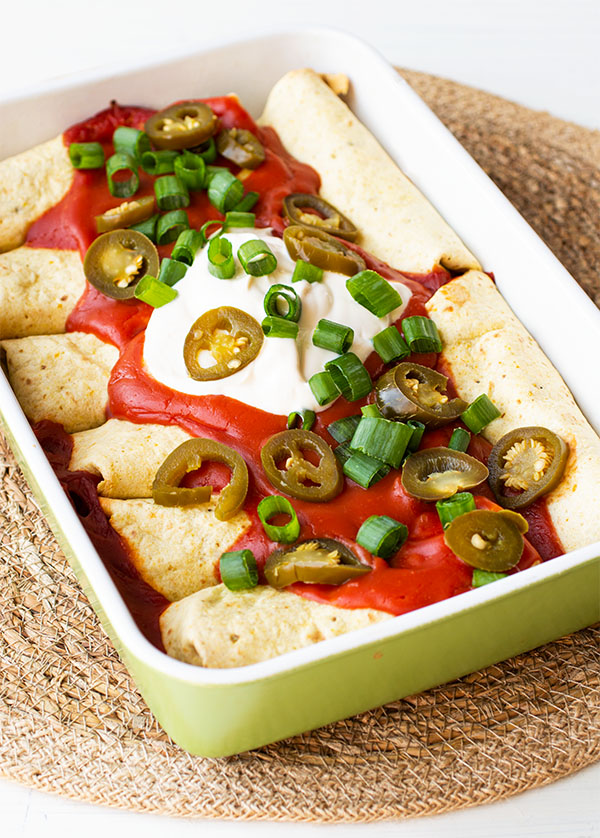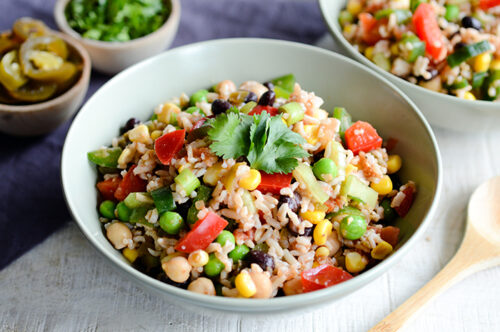Making the Change to a Healthy Lifestyle Work, Part 1 – Why Change?

By Mary McDougall
Change Can be Bothersome…or Exhilarating
Sometimes I think that, for many people, far worse than the fear of public speaking, or for some few, the fear of dying from a dreaded disease, is the fear of changing their diet. They think, “Life will be worse, I’m not sure how, but I know it will be worse.” “My social life will be ruined,” “I’ll never get to enjoy my favorite foods again,” and “The preparation of these new menus will make me a slave to the kitchen.” Fear of making the change arises from not being willing to imagine how the new ways will bring you greater pleasure and comfort than did the old ways that have governed your eating habits during all the previous years.
The first step to successful changing is to admit that, sure, it will be troublesome, and that, yes, you will have to devote considerable effort to make it happen. But isn’t this exactly what happens with every new endeavor? If you do not make the commitment you will not reap the benefits.
In preparing for the change you should list all the reasons why you want to improve the quality of your life by improving your diet. Motivations can be found in such areas as concern for your health and appearance, your religion, regard for ecology, or sympathy for the welfare of animals. Only you know what psychological buttons need to be pressed deep down inside of you, to persuade you to move from the place you are in now to a more healthful diet and a better lifestyle. Once you have made the decision to change, then you can take the few steps needed to make the transition easier and more effective.
Motivations
* I want to look better and feel better.
* I’m tired of the pain of indigestion.
* Daily laxatives must no longer be a part of my life.
* Frequent headaches must mean that something is wrong; they’ve got to stop.
* I’m too young to have painful arthritis.
* Breast cancer is a miserable and slow way to die. It’s not for me.
* I fear that I won’t live as long as my spouse will.
* Since childhood I’ve felt that something was wrong with eating the flesh of cows and lambs and piglets.
* The need for the paper wrappings for America’s hamburgers alone is destroying rain forests and the health of our planet.
All or Nothing?
Every positive experience you have with safer eating is important in getting you to the day when you do decide that you are worth the effort and finally going to make the change. You may decide to start slowly by slipping in an occasional McDougall recipe along with your old favorites. There’s nothing wrong with this approach, except for a lot of heavy competition from those long-time favorite (and heavy) foods. Taking a part-way approach can set you up to suffer slow withdrawal symptoms – and inevitable disappointment in your results. You should not expect to gain the dramatic improvements in your health and appearance that the Program offers those who follow it strictly. When they’re given no other choice, most people adjust to the new tastes and methods of food preparation within three or four days. The McDougall Program helps you to do the best you can for yourself as soon as you can.
Challenges for Change
1) Unaccustomed palate
2) Resistance from friends and family
3) Meal planning
4) Shopping habits
5) Cooking techniques
6) Seasoning food
The Unaccustomed Palate
You’re up for the challenge. Now you need to select a meal plan. This might seem like a formidable task. It will be simpler when you realize that your goal is to find a few favorites, no more than a dozen, to prepare and eat as often as you wish.
Almost everyone’s diet is simpler and more monotonous than we realize. All too often you eat the same thing for breakfast, whether your choice is bacon and eggs or oatmeal. Lunch is the same combination sandwich, day after day. For dinner you select from probably five or ten entrees. Every restaurant serves one favorite item that you choose frequently.
Identify Similar Dishes
Think about the textures and distinctive flavors of dishes you already like. Some meals in your present collection are close to being acceptable, and can be made right with minor modifications. For example, oatmeal is a popular breakfast. Instead of submerging it in milk, butter or cream, try using instead some low-fat non-dairy milk, fruit juice or apple sauce. If you want more flavor, sprinkle on a few grains of cinnamon, or a small amount of brown sugar. Try eating crisp hash brown potatoes without the usual bath of grease, cooked instead, oil-free on a non-stick pan. Pancakes and waffles can be made from healthful ingredients and served with maple syrup or applesauce.
Most soups are already vegetable based. In making our kind of soup you, simply leave out the usual starters of ham, chicken, or beef that contribute so much fat and cholesterol. Beans, corn, potatoes and pasta will provide the more solid substance of your soups. Add salt, if it is tolerated, and appropriate spices to gain those appetizing flavors you like.
For evening meals you may already be enjoying dishes made primarily of starches, vegetables and fruits. Think about your favorite pasta and stew dishes. In preparing your rich red marinara sauce, you need only to omit olive oil to transform it into a healthful and delicious topping for pasta.
Resistance From Friends and Family
You yourself may be convinced that The McDougall Program is the best way known to science and medicine for you to eat, but your spouse, who has never been sick a day, and wears the same size clothes as he did in high school, feels this message does not apply personally to him. Your children think your mind has been taken over by aliens from outer space. Heart disease and breast cancer are as close to their worries as the possibility of a comet falling on them. Your friends whisper, “There goes Pat on another one of those get healthy quick schemes. He’ll be on something else next week.”
Sure enough, changing your family’s eating habits takes some work. You have to be creative in the kitchen, and you have to be patient with the doubting critics around the table. In most cases, no more than four months will be needed before you “convert” the other members of the family. Your own success can help to persuade them, as they see you becoming more energetic, looking younger, and hear you telling them that you’re feeling so much better.
Your concern about the welfare of close friends and all members of the family may lead you to want to share this message with others. You have personally felt the benefits that come from changing your diet, and should feel free to tell others about that happy experience if you want to.
Making Family-Style Meals
Take into consideration your family’s preferences when planning your meals. If they’ve always hated eggplant, don’t make baked eggplant. They won’t like it while on this Program either. Keep the importance of starch-basing your family’s diet always at the forefront of your planning. Pasta dishes, soups and breads are familiar and favorite foods. Potatoes, like in hash browns, potato salad, and mashed potatoes; and beans, like chili and baked beans, have also been a substantial part of the American family’s style of eating.
If you can’t get the full cooperation of every family member at the beginning, then the best advice is to prepare enough of your meal for everyone to share, and then provide the others with a side dish of whatever they think they’re missing–or, better, allow them to make it themselves. For example, if you serve spaghetti and a delectable oil-free marinara sauce (with their favorite spices in it) and you think they won’t be happy without cheese and meatballs, then provide one or both of them as side dishes.
Bean burritos can be served buffet-style. Start with corn and wheat tortillas. Set out small bowls of lettuce, tomatoes, onions, and sprouts. Different kinds of salsas should be placed at the end of the line. You have chosen all these good items. If your family is not yet satisfied with these offerings, because they’re still longing for meats and salty dairy products, then put out a bowl of cow’s cheese for them. You could also make a hamburger topping enhanced with meat seasonings. Better yet, these same spices can be mixed with plant-based ingredients like cooked lentils or veggies or for a “meaty” topping containing no cholesterol or animal fats. In the same considerate manner, offer a piece of chicken or fish as a side dish to a Mexican rice dinner. Be creative – even while you’re indulging those holdouts still numbered among the unconverted.
Try cutting back on the mounds of meats and dairy foods you’ve been bringing to the table for too many years. Switch to plant-basded alternatives. At the same time, increase the amount of starchy foods. When eating McDougalls’ kind of food you may need to double the quantities you consume, compared to the standard American diet in order to satisfy your appetite. That’s OK. These are good calories and generous ingredients.
Foods Must be Available
The fastest way to make the McDougall Program fail (just as all the other diets you’ve tried), is to give insufficient attention to buying good foods and then to preparing delicious meals from them. When the refrigerator and the cupboards are bare, or worse yet, still filled with the old high-fat items that brought you to your alarming state of obesity and poor health, you’re going to have a hard time fixing meals that please and ease.
Start by consulting other members of the family about dishes they would like to try. Have on hand assorted breads, bagels, pretzels, rice cakes, corn thins and crackers, all prepared with healthy ingredients. Leave a bowl of fresh fruits on a counter or table in an area of heavy traffic. Cut up fresh vegetables and store them in the refrigerator in water, to maintain freshness. Set prepared vegetable dips, spooned into in plastic containers or still in their original packages, next to the vegetables. Cooked rice and baked potatoes, cold or hot, make quick snacks. Barbeque sauces, salad dressings, packaged soups, or left-over sauces and soups make easy toppings for cold cooked starches. Our refrigerator frequently holds a big bowl of cold boiled potatoes cleverly placed at eye level.
Recommended Articles

McDougall Program Maximum Weight Loss 10-Point Checklist and Recipes

Vitamin D: Values for Normal Are Exaggerated






